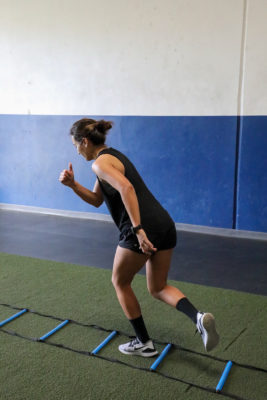When we look at what makes an athlete superior, we look at speed, strength, and power. Some will look at how the athlete performs under pressure like scoring an overtime goal or striking out a batter with the bases loaded. Others may look at winning such as an elite player who makes teammates better around them and just finds a way to win. These are all valid points that can be argued. What can’t be argued is availability. An athlete is only valuable when healthy or available for key situations in a game. It may sound a little harsh, but everyone is replaceable, and an athlete is only valuable when he or she is healthy and playing the game.
Availability isn’t just an important attribute of an athlete but also for the success of teams. In my personal experience, teams that get to the Stanley Cup Finals typically have low man-games lost which is the stat that shows how many games were missed due to injury. In recent studies, teams with lower man-games lost had a higher winning percentage in the NBA and soccer teams in the Champions League showed an increase in average points per match.
Staying available or injury-free can be key in making a club team, gaining a college scholarship, or getting a longer or higher-paying professional contract. Studies from the National Athletic Trainers Association (NATA) show that as athletes get older and play at a higher level, the injury rates do rise, but what are programs doing to prevent injury? All athletes want to be injury-free, but not all athletes put in the time and effort to do so. There is no full-proof method to eliminate injuries, but there are ways to reduce them. Meta-analysis findings from the NATA show that knee injury prevention programs have a 54% relative risk reduction in knee injuries and a 39% relative risk reduction in lower-body injuries. These are significant findings.

Single Leg Hop in Ladder
There are unlimited programs that can reduce injuries, but the most effective ones are the ones that are performed on a consistent basis. Prevention programs need to buy-in from the person running it whether it be an athletic trainer, strength coach or sports coach, the coaching staff, and most of all, the players. The program does not have to take up a lot of time. It can take 10-15 minutes and can be incorporated as part of a team warm-up prior to practice or as part of a cool-down following practice. The frequency is two to three times per week. The program should be multifaceted and include strength, stability, balance, jumping, landing, and flexibility. It helps with buy-in if sport-specific movement is included so the athlete can see how the programs relate to their sport.
Examples of exercises that can be included in a lower-body injury prevention program include single-leg squats, squat jumps, broad jumps, hops to sprint, lateral bounds, and calf stretches. There are a ton of programs on the internet, but I would suggest finding a healthcare professional with experience in your sport to manage a program. Athletic trainers and strength coaches should know the common injuries in your sport and ways to prevent them. They should also know proper mechanics and be able to correct athletes who struggle to perform exercises the right way as this is another key to success.
Proper injury prevention programs can be performed in less than 15 minutes a day, two to three times per week to be effective. The keys to effectiveness are consistency, a multifaceted approach that is sport-specific, and performing the exercises with correct mechanics.
Chris Phillips is an Athletic Trainer and Strength and Conditioning Specialist with over 30 years of experience in professional hockey, soccer, and football. Chris is the owner of Compete Sports Performance and Rehab in Orange County, CA. He was also a member of the medical staff for the Czech Republic at the 2022 Winter Olympics. He can be contacted through Compete’s website at www.competeperformance.com

